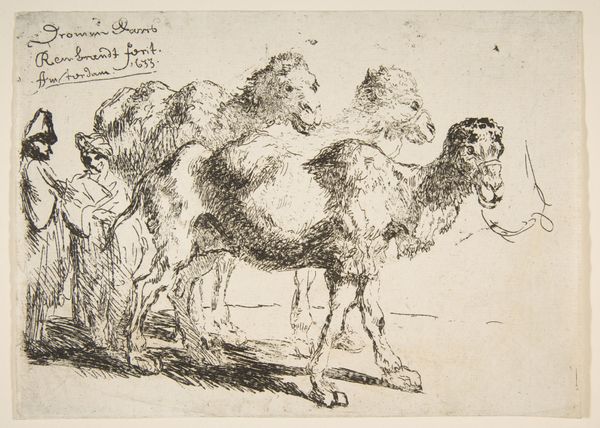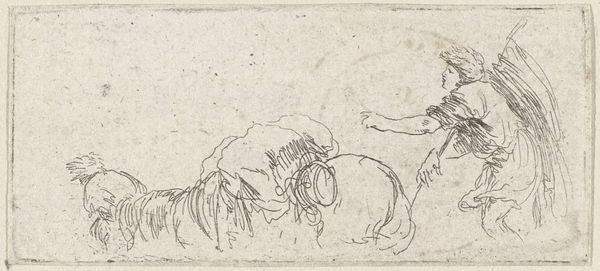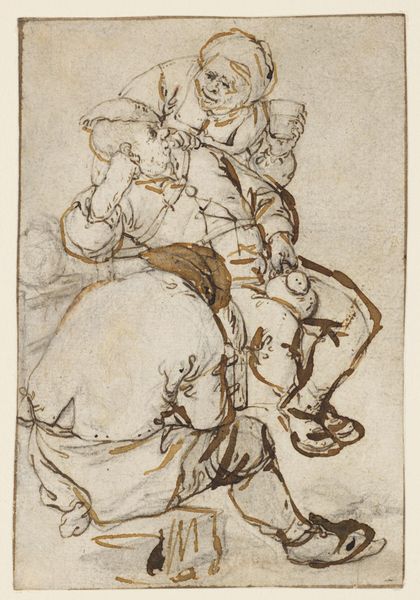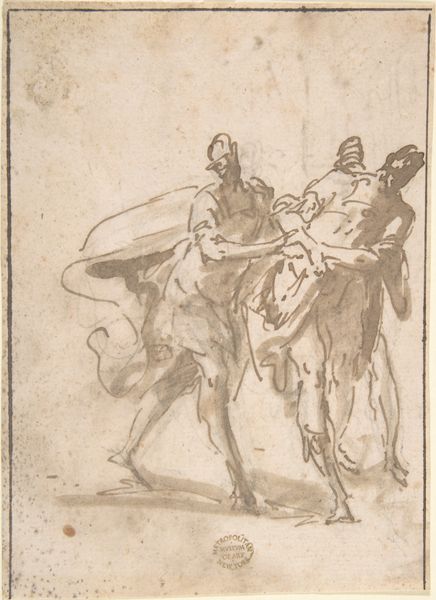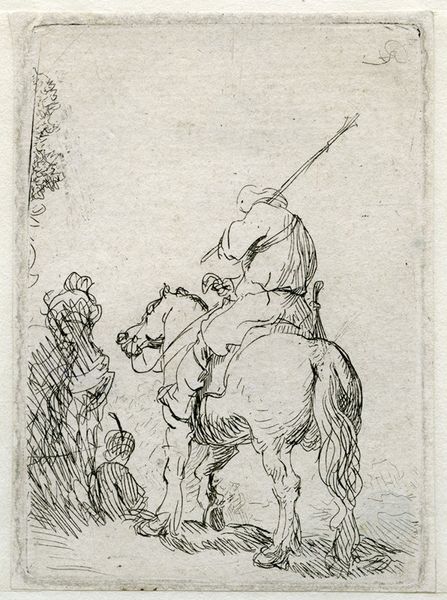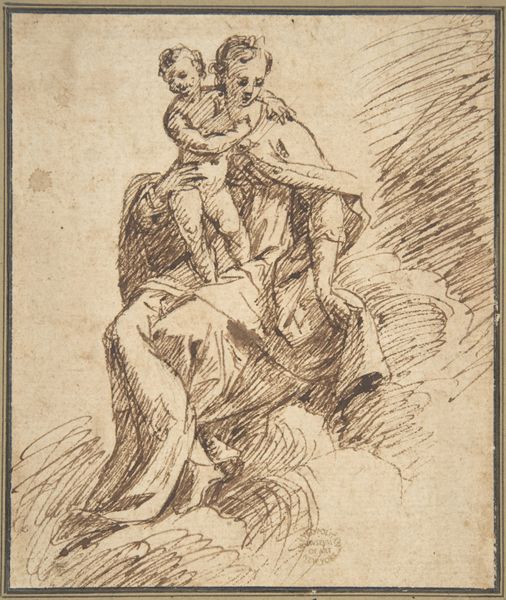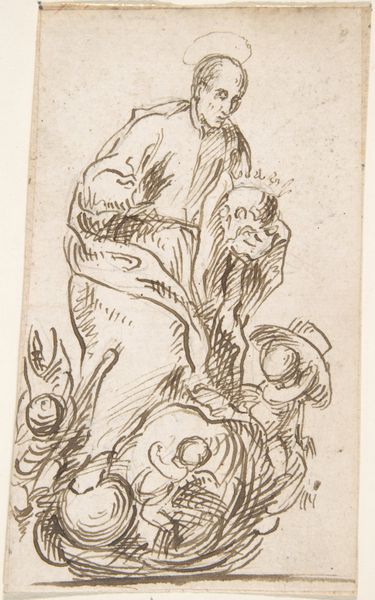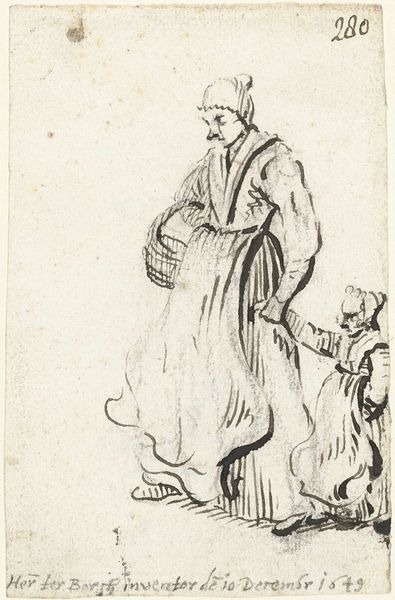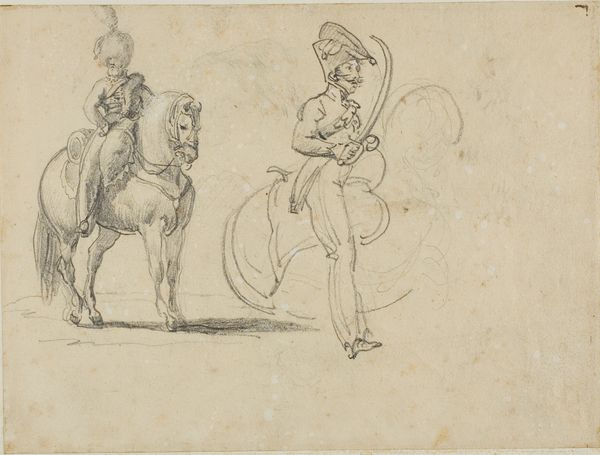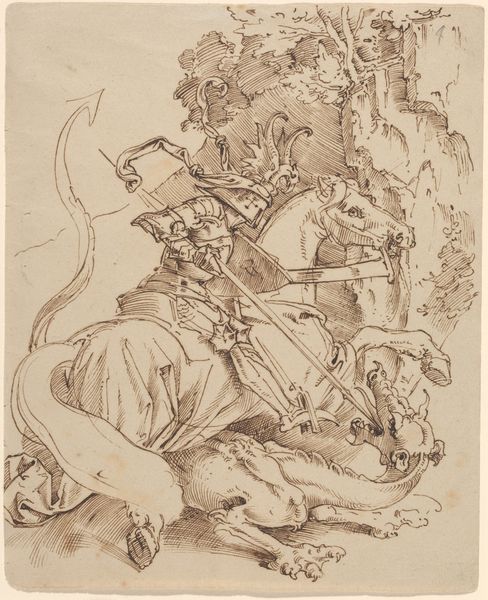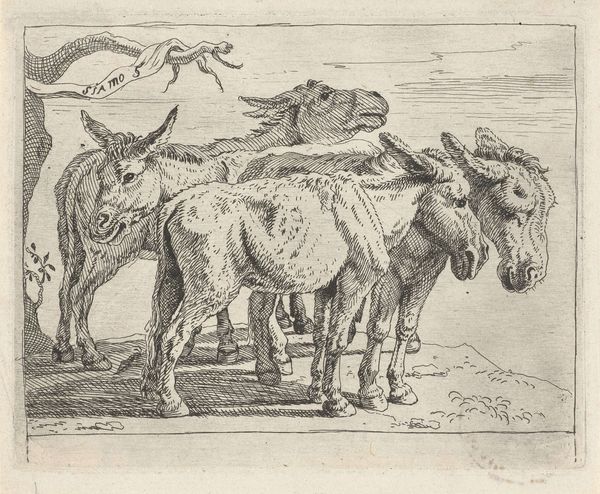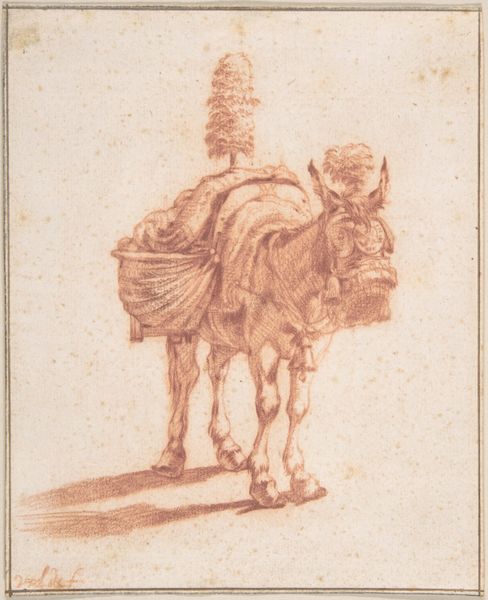
drawing, ink, pen
#
portrait
#
drawing
#
toned paper
#
light pencil work
#
baroque
#
pen sketch
#
pencil sketch
#
figuration
#
personal sketchbook
#
ink
#
ink drawing experimentation
#
pen-ink sketch
#
line
#
sketchbook drawing
#
pen
#
genre-painting
#
history-painting
#
sketchbook art
#
fantasy sketch
Dimensions: height 190 mm, width 160 mm
Copyright: Rijks Museum: Open Domain
Editor: Here we have "Roman Soldier on Horseback," a pen and ink drawing on toned paper, possibly from 1624, by Jean de la Chambre. There's a nervous energy in the quick lines, especially around the horse's head. What stands out to you in this sketch? Curator: What grabs me immediately is the performance of power that's being enacted. Think about the 17th century and the construction of masculinity and authority. How is it being displayed here? This isn't just a portrait; it’s a statement. The Roman soldier, the horse—both are symbols. Editor: Symbols of...? Curator: Military might, imperial control. But look closer: the nervous lines you mentioned, the somewhat exaggerated expression of the rider… Do you see a tension, perhaps even a fragility beneath the surface of this idealized image? Editor: I do now! It’s like the artist is questioning the very bravado they're depicting. Curator: Precisely. Consider who would commission or buy a piece like this. What narratives were they hoping to reinforce about themselves, their families, their place in society? And what alternative readings might we find by looking beyond their intended audience? How does the act of sketching – so immediate, so personal – reveal something deeper? Editor: So, it's not just about the surface representation of a soldier but the underlying power dynamics and social contexts. Curator: Exactly! And how even a simple sketch like this can open up complex discussions about history, identity, and the very nature of power. Editor: That's really insightful. It's shifted my perspective entirely. Thank you!
Comments
No comments
Be the first to comment and join the conversation on the ultimate creative platform.
